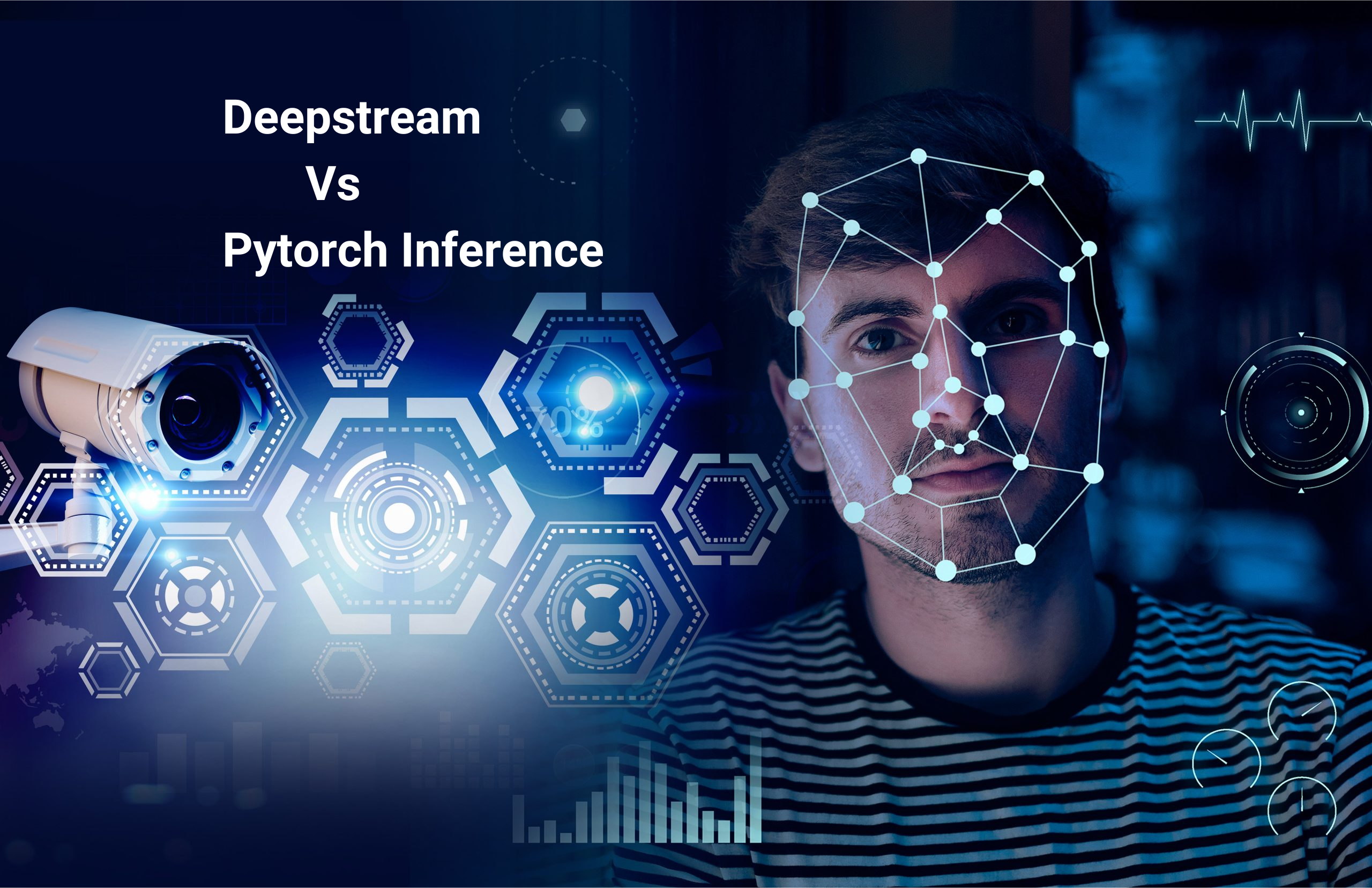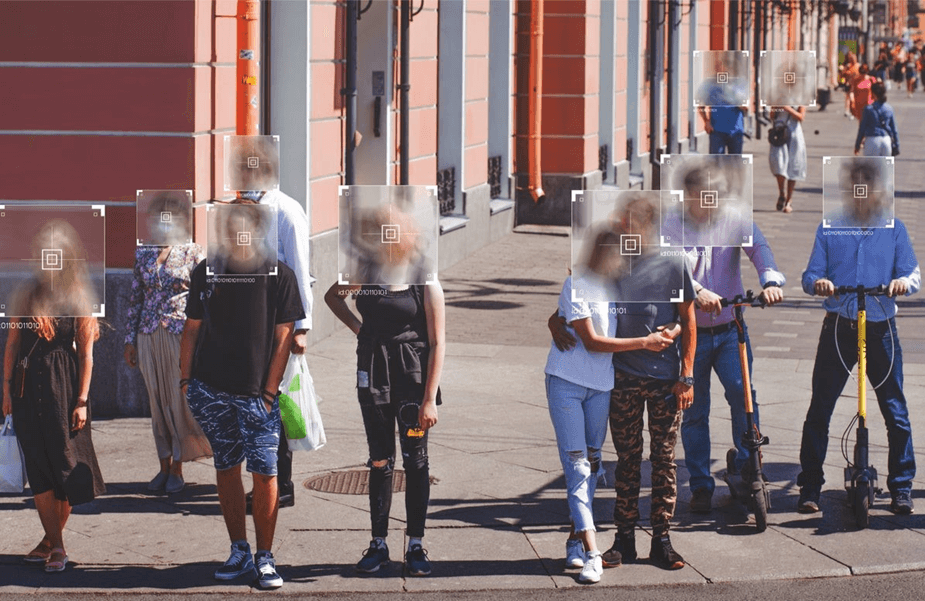
Video Anonymization: Protect Privacy and Monetize Data
Introduction
The global video surveillance market is likely to gain momentum from the increasing usage of deep learning technology in Smart City, Healthcare, Retail, and Autonomous vehicles. The recently published report by Fortune Business Insights™, titled, Forecast, 2021-2026 mentions that the video surveillance market size was USD 19.12 billion in 2018 and is projected to reach USD 33.60 billion by 2026, exhibiting a CAGR of 6.8% during the forecast period. However, most of the data collected contain sensitive Personally Identifiable Information (PII) and cannot be utilized commercially due to restrictive privacy regulations like GDPR, CCPA, PDPA, FOIA, etc.
Gyrus utilizing the most advanced computer vision and deep-learning techniques has built different levels of proprietary Video Anonymization algorithms. This empowers the companies to ensure both privacy & monetize the video data in compliant with these regulations. The PII free videos can be used freely for training, inference, sharing, etc.
In this blog, we will discuss how can personal & sensitive data in the video be truly anonymized by processing every element in every video frame.
The three different levels of anonymizations are:
- Mask out Faces
- Blur Faces with Intelligent Filters
- Replace Faces with Synthetic Characters
How it works?
In the first two levels, the model auto-detects the objects of the selected type (faces, number plates etc.) and masks out or blurs the objects. The Face replacement model is an enhanced video anonymization model used to superimpose the specified object in the source video or image with a synthetic character or 3D model to protect sensitive information and analyze human behavior. It replaces facial features whilst retaining demographic traits, emotion etc. The model can also remove other Personally Identifiable Information (PII), such as license plates, email addresses, phone numbers, etc, with computer-generated face & data to ensure privacy compliance. The PII anonymized video can be used freely for storing, training, inference, sharing, etc. 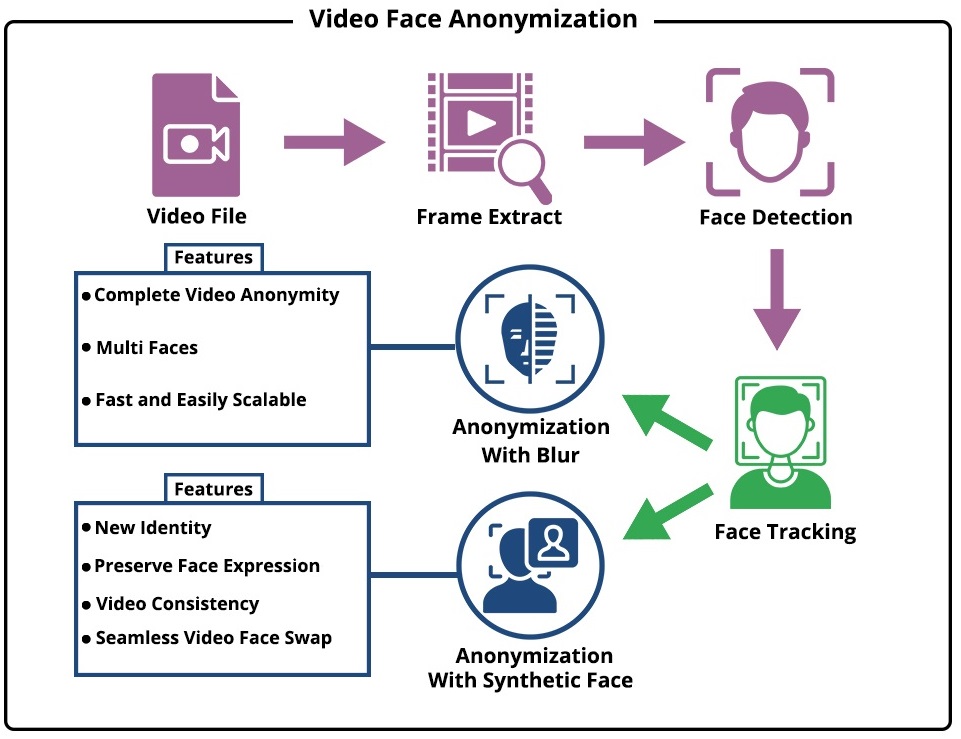 Video Anonymization Workflow
Video Anonymization Workflow
1. Mask Out Face
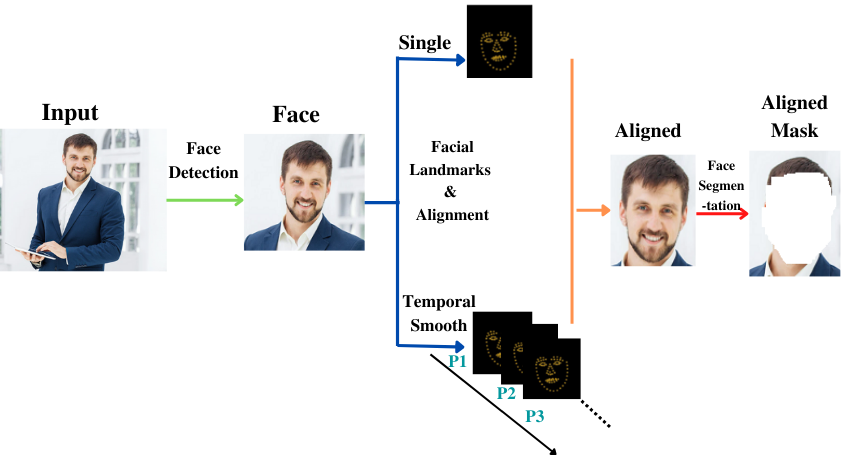 2. Blur Faces with Intelligent Filters
2. Blur Faces with Intelligent Filters
This is another simple model that identifies the faces and applies a filter on them like a low pass filter to reduce the resolution of the faces. The Face blur feature is implemented using four step process
First the face is detected in the video stream or in a still image using object detection neural network model. Once a face has been detected, the model extracts the region of interest and draw bounding box. Then, the model adds a layer that blurs or pixelates the detected faces. And the final stage is to store the blurred face back in the original image. At this stage, the person’s face can no longer be seen by the human eye.
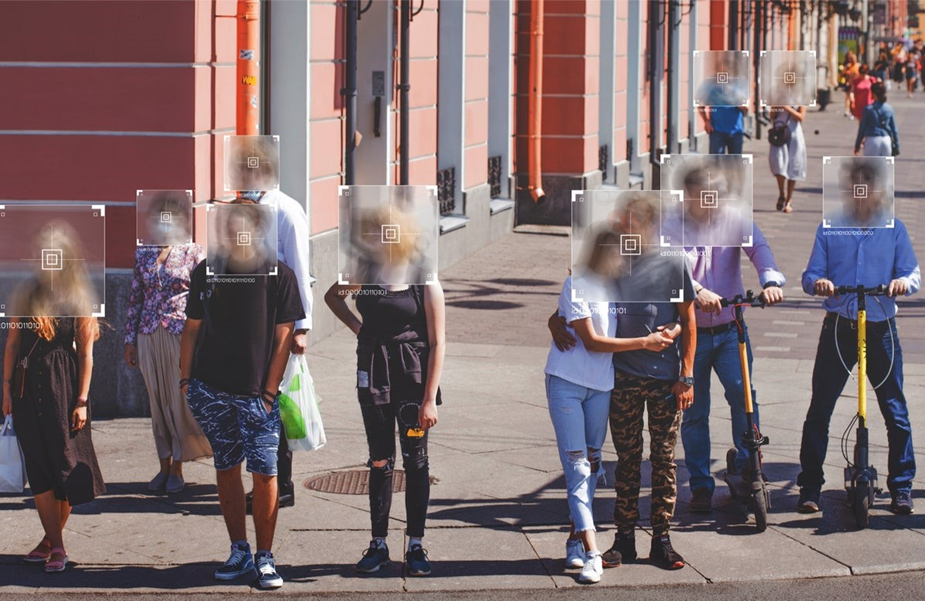
3. Replace Faces with Synthetic Characters
The people in the camera feed are classified by various demographics such as Age, Gender, Ethnicity, height/weight/face shape, and a specific replacement synthetic character is chosen. The first stage of the model is to detect all the faces in the image capture and detect their sizes. As a next step, within each detected face, the following attributes are measured
- Jaw Line
- Orientation of the face (x, y, z)
- Face Features (that carry emotion)
With these features and the replacement model an output video stream is generated using various ML/AI Models. In output video, faces are replaced with the AI-generated, photorealistic faces of non-existent people. The anonymized faces retain a natural complexion and preserve key non-identifying attributes of the original face including age, gender, expression, gaze direction, and more, allowing for analysis while adhering to privacy laws and regulations. This technique is far superior to legacy solutions that rely on blurring or pixelation. The replaced video stream can be freely used for post-processing such as gaze detection, emotion detection, dwell times, etc.

Applications:
Retail
Customer Intelligence & Activity Analysis
Surveillance
Privacy Compliant Intelligent Video Analytics
Healthcare
Privacy Protection of sensitive data
Automotive
Training ML models for autonomous vehicle
Conclusion
Data privacy laws put onerous restrictions in using the collected data from cameras in stores etc. Gyrus developed three different models to cleanse the data and make it free to use. Off these, the Face replacement model is an enhanced video anonymization model used to superimpose the specified object in the source video or image with a synthetic character or 3D model to protect sensitive information and analyze human behavior. It replaces facial features and other Personally Identifiable Information (PII), including license plates, email addresses, phone numbers, etc, with computer-generated face & data to ensure immediate privacy compliance. The PII anonymized video can be used freely for storing, training, inference, sharing, etc.


